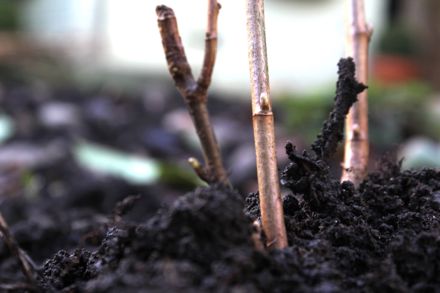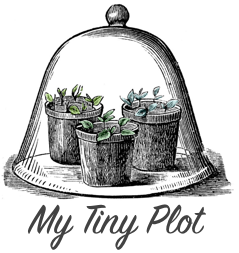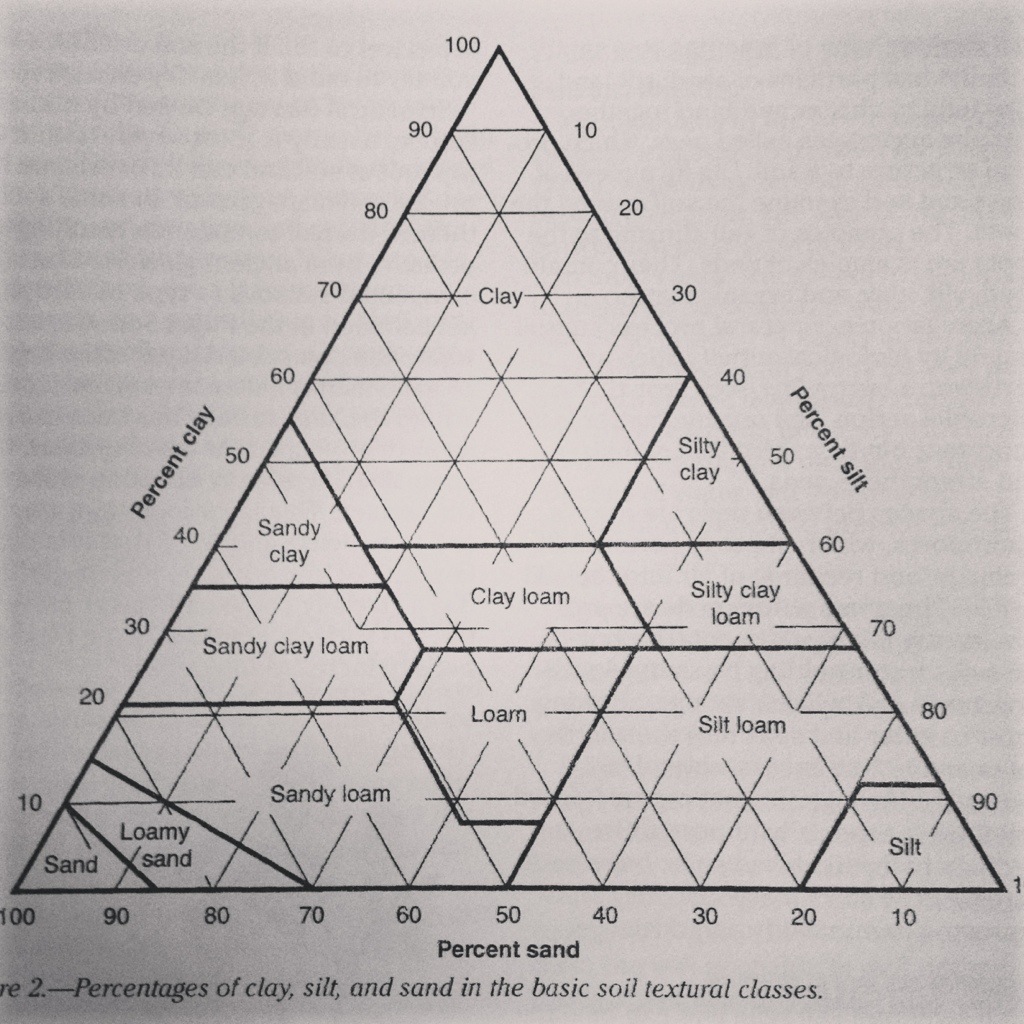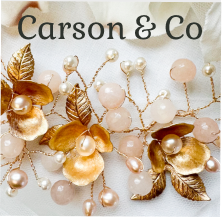All About Soil Structure

I learned all kinds of useful facts about soil at my last Master Gardener session so I thought I would share some of it here. I already knew some things about soil, like clay soils hold water and can be difficult to work, and sandy soils tend to be harder to keep in one place and don’t hold nutrients quite so well.
I also knew that you could figure out what kind of soil you have by putting some in a jar with some water, shaking it and letting it settle over time. The layer at the bottom will be sand, the layer in the middle will be silt and the layer at the top will be clay. That way you can determine how your soil is built up. But what I didn’t know was the reason why.

As you can see from the photo above sand particles are huge compared to silt particles and effectively gigantic compared to the miniscule clay particles. That’s why the sand particle settle first, then silt, then clay. Because sand particles are so big there are large spaces between each particle and that’s why sandy soils don’t hold water – because the water flows right through.
Similarly, when it comes to clay soils the particles are so tiny that they stick together very tightly and let hardly any water through, that’s why they are often water-logged.
Sand, if rolled into a ball will not hold together. Silt, if rolled into a ball will hold together somewhat but then fall apart, and clay, if rolled into a ball, will stay in a ball because the particles are so small.
And then there is Loam. Lots of gardeners talk about it but what exactly is it?
Loam is the perfect soil. It’s what you’re aiming for in your garden. Loam is simply a soil that has equal parts sand, silt and clay. So it’s not too waterlogged, and it’s also free-draining. Look at the soil triangle above. You’ll notice that loam is in the middle. You are most likely to find clay particles in your soil that’s why it takes up so much of the triangle. Silt and sandy soils are less likely and they take up small portions of the triangle. But what you’re aiming for is somewhere in the middle with a little bit of each particle in your soil.
But what about organic matter? Well, organic matter is not really calculated in soil structure. Mainly because it’s transitory. You add organic matter, it breaks down into humus which is a kind of natural glue to strengthen and bind the soil but is not a permanent part of the soil. Gravel and rocks are also not included in this as they don’t contribute to the soil’s productivity.
When the sand, silt, and clay cluster together they form aggregates called peds which provide structure to soil. Organic matter helps bind these particles together. A well-structured soil is like a sponge allowing water in but also enabling it to leave when there is too much of it.
Because soil structure is so important it’s vital to preserve it when it’s attained. That’s why gardening books always warn against walking on the soil, as compaction ruins soil structure and also digging when the soil is either water-logged or frozen. This also destroys soil structure.
 My Tiny Plot
My Tiny Plot




Love this clear concise explanation. Thanks
A really masterful description of soil, with much information I didn’t know.
I’m continuing to enjoy your blog since your move to the States.
All the best!
really interesting. thanks for the post.
sorry to be a pedant but i think you might have a typo. do you mean humus?
hummus is that delicious chickpea dip…with that said, i wouldn’t mind if my soil broke down into that stuff at all!
Interesting blog working as a landscape gardener in the Uk ,soil structure and the wet weather has caused me no end of problems over the last year when carrying out turfing work.
I love following your blog! Thanks for all the useful advice.
We’re starting to develop a garden in France and I’ll be blogging about our adventures there very soon. Your site is super helpful.
I’ve just given you a shout over on my blog Only Best For Baby in my latest post Outside Garden.
Lydia x
I have loved reading how you have made the transition form Ireland to Portland….Your soil class was informative and a great reminder to look closely at the soil in our gardens and see what we can do to approach that ideal soil composition. Thanks
Thanks Jeane have updated it now.
It’s great that you’re learning this, as I’m studying on an RHS horticulture course and we’ve been learning the same things about soil in the last couple of weeks. I have that pyramid chart too!
I love learning all this, don’t you?